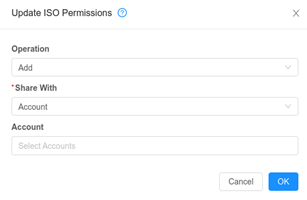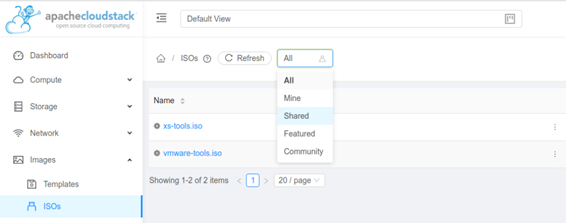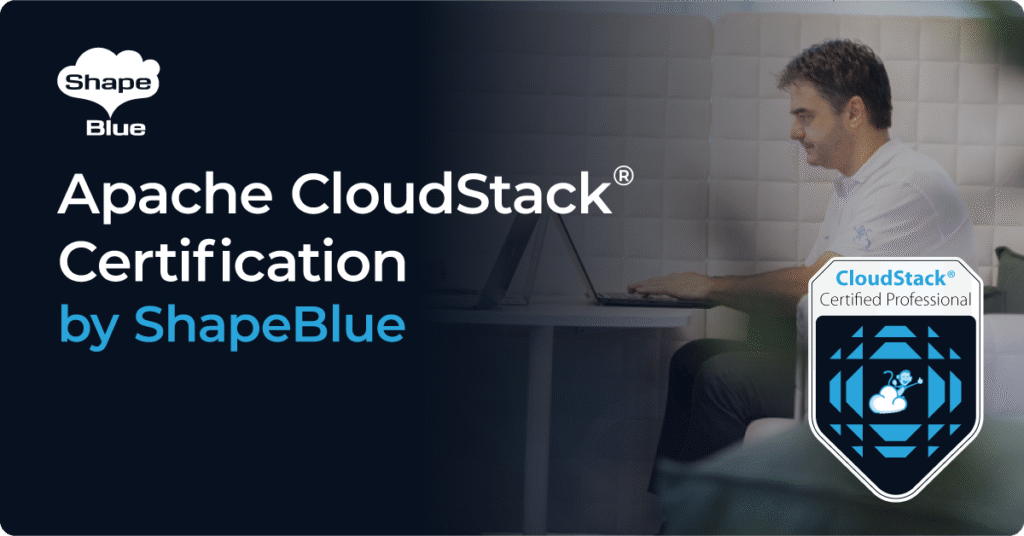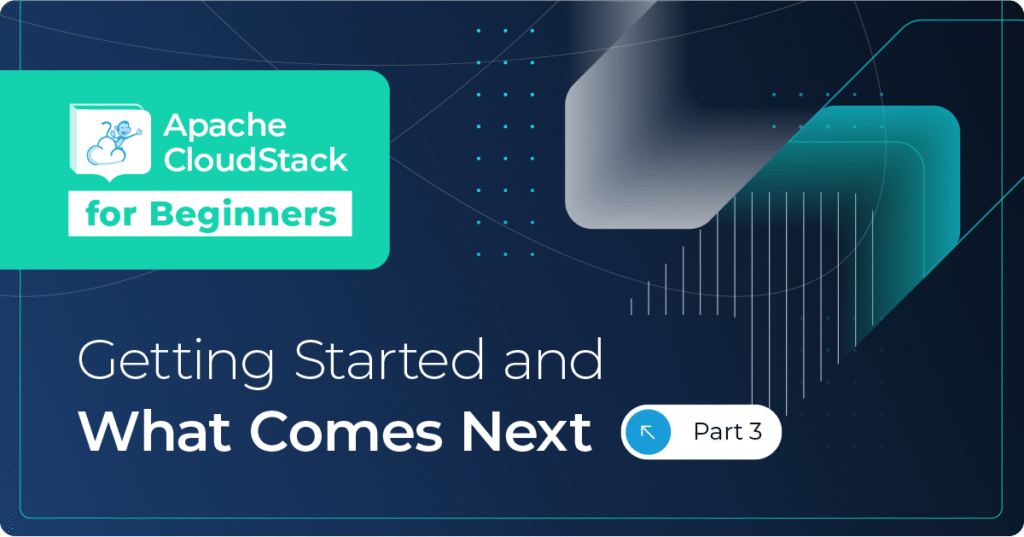CloudStack supports sharing templates and ISOs between accounts and projects through the API ‘updateTemplatePermissions’ and sharing templates through the UI. However, prior to version 4.15, it was not possible to share ISOs from the UI. This feature introduces support for sharing ISOs through different accounts and / or projects via the UI.
With this feature, a user or administrator must be able to update the permissions for an ISO via API and UI, being able to:
- Share the ISO with another account
- Share the ISO with another project
- Revoke the access to the ISO for an account
- Revoke the access to the ISO for a project
- Reset the ISO permissions to the default
A new button is added in the ISO details view: ‘Update ISO permissions’. This button is located at the top right corner of the ISO detail view:

Once clicked, the user is prompted with a dialogue like the one below:

The user or administrator must complete three fields:
- Operation: Must be one of the following values: ‘Add’, ‘Remove’, ‘Reset’
- Share With: It is not displayed if the Operation field is set to ‘Reset’. If the Operation field is set to ‘Add’ or ‘Remove’ then the possible values are: ‘Account’, ‘Project’
- [Account/Project]: It is not displayed if the Operation field is set to ‘Reset’. The field label depends on the selected ‘Share With’ field type. In this field, the user or administrator must provide an account or project name to be added to or removed from the permitted list of the ISO.
- When ‘allow.user.view.all.domain.accounts’ = true: the dialog box displays a list of accounts within the same domain, otherwise the user must specify a comma-separated list of account names instead of selecting the account names from a list.
The ISOs shared with a user are displayed under the ‘Shared’ section of the ISOs list view:

This feature Will be available from CloudStack 4.15.
Nicolas Vazquez is a Senior Software Engineer at ShapeBlue and is a PMC member of the Apache CloudStack project. He spends his time designing and implementing features in Apache CloudStack and can be seen acting as a release manager also. Nicolas is based in Uruguay and is a father of a young girl. He is a fan of sports, enjoy playing tennis and football. In his free time, he also enjoys reading and listening to economic and politics materials.





